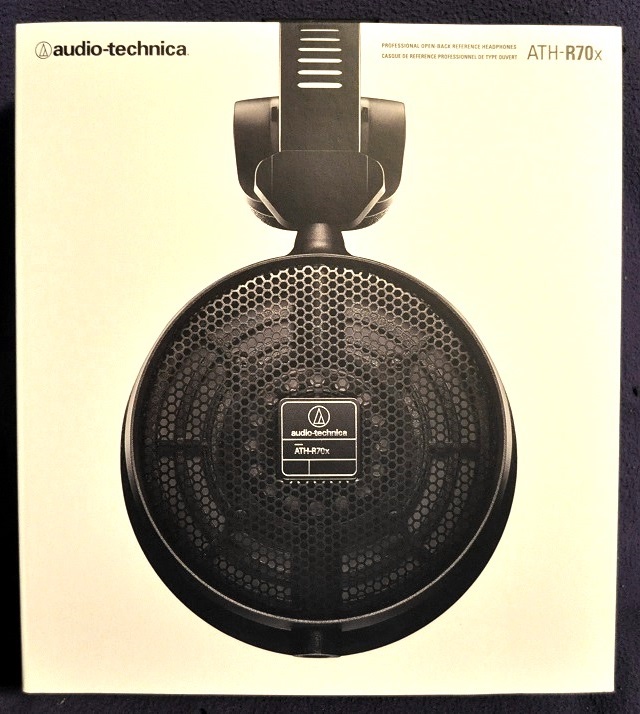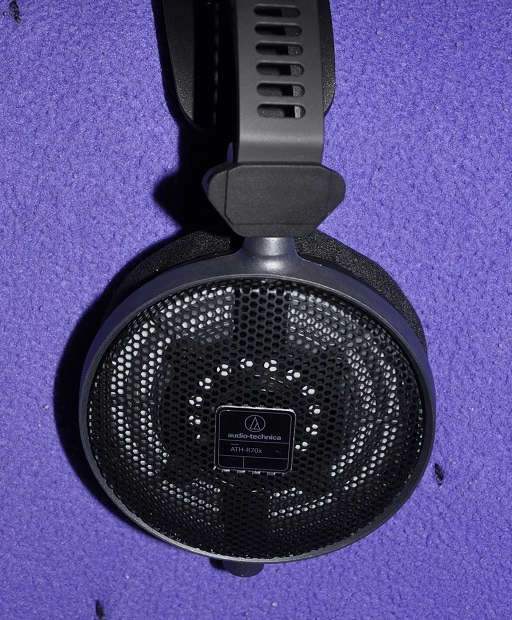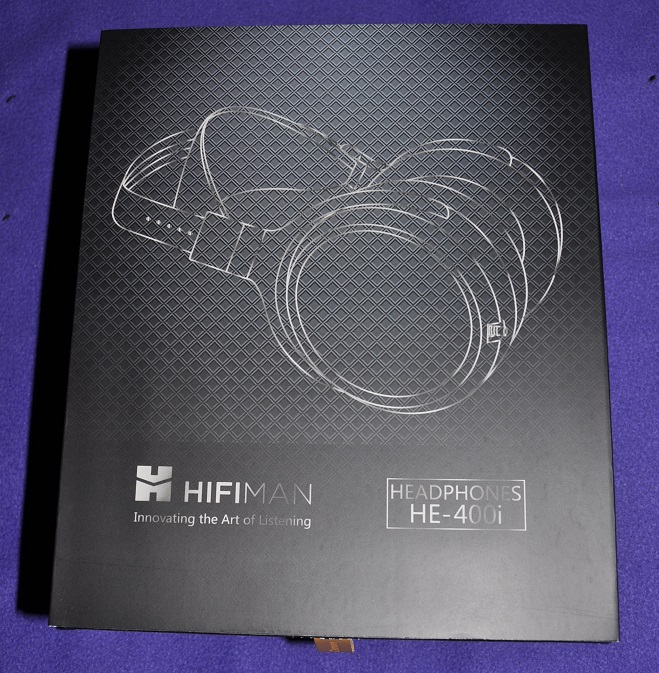
SPECS:
http://www.hifiman.com/products/detail/178
Driver Type Single-sided Planar
Plug Type 3.5mm with 7.5mm adapter
Cord Length 1.5m
Frequency Response 20 Hz – 35 kHz
Sensitivity 93 dB / mW @ 1kHz
Weight 370 g
WHERE TO BUY / COST:
http://store.hifiman.com/index.php/headphones/he-400i.html
$399 new
OVERVIEW
Being familiar with planars from Audeze, Fostex, and MrSpeakers I want to report how the HE-400i from HiFiMAN stacks up. HiFiMAN aims at delivering a comfortable headphone with tight bass while still keeping the planar sound signature. They also strive for the HE-400i to be easily driven by portables and we will investigate the efficiency along with the acoustics.
The initial impression is that the packaging, headphone, and cable all make one cohesive bundle with the exception of the right-angled jack plug on the end of the cable. I see no reason for a right-angled jack plug. This and all of my other headphones all have a straight jack plug. It appears to be an attempt to make it more portable, but the headphones themselves are so large it is unlikely that anyone is going to wear these away from their home rig. HiFiMAN did replace the screw in connectors that attach the cable to the headphone with 2.5mm stereo jacks making connecting the cable a cinch. Yay!
AESTHETICS
First of all the box is really well packaged. Adequate foam is placed during shipping and the headphone is neatly tucked inside the shaped compartment foam so they do not bounce around during shipment. The accessories are minimal including just a cable, 7.5mm adapter, and the headphones. It would be nice to see a 3m cable included that has the straight jack plug, but the short cable was not a problem for my desktop setup and after using it for a few days makes sense.
The finish is dark blue with a metallic sheen. The grills are free of defects and add a hi-end look to the headphone. The gimbals, temples, and headband are all cohesive and because the earcups can swivel to completely flat, fit issues are minimal. The headband and head-size adjustment systems are one of the best I have seen in any headphone. They are superior to headphones like AKG and Audeze because they are easier to adjust and simpler. The earpads are pleather with a thin ring of felt on the part that rests against the ear/head. This allows for some air venting and typically tightens up the bass. It also adds to comfort. The earpads are angled with the thickest part of the pad designed to rest at the back of the head tilting the driver towards the ear canal. The earpads can be removed by gently deforming one side and pressing inward towards the center of the earpad and then bending the pad slightly. This reveals clips that hold the pad to the earcup. With the earpads removed one can replace them with other pads and play with the angle. To me this was an absolute must because the default angle for the pads made the listening too fatiguing possibly because the angle was too direct for my ears.
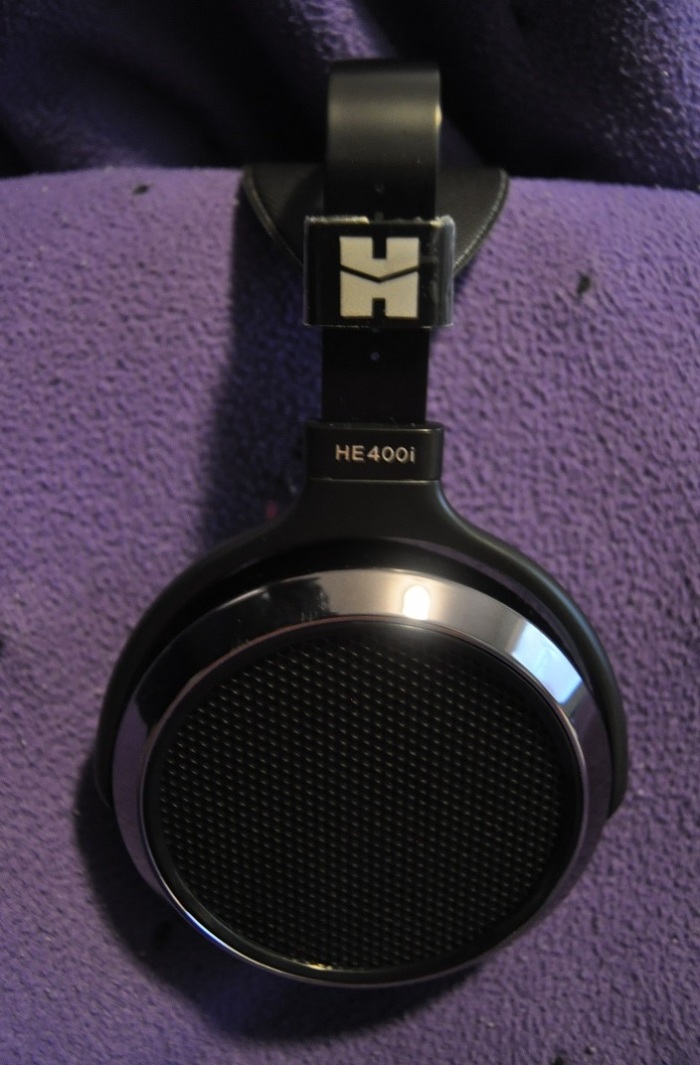
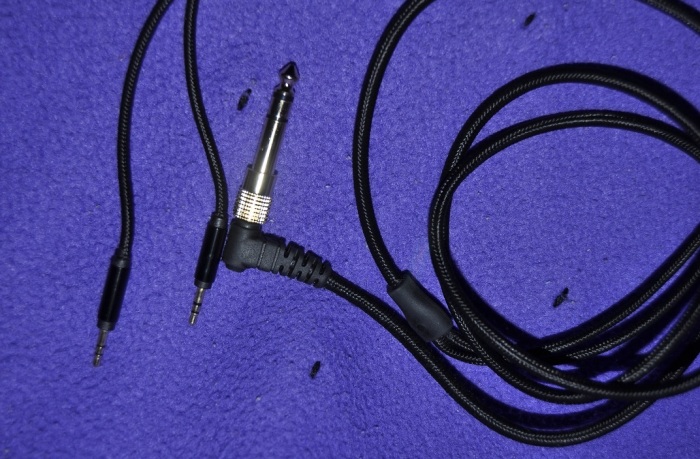
After a long listen I determined that the peak extending from 3.5 kHz to 7.5 kHz is too fatiguing for my ears without moving the pads around. I reversed the tilt placing the thickest part of the pads to the front and thus the thinnest at the back. This drastically mellowed the troublesome peak and made the headphone much more listenable. It also shifted the soundstage from a back of your head experience to a more speaker-like sound. The bass is airy and renders very low bass notes. The mids remain extremely neutral and the treble keeps its rolled-off nature. If the HE-400i is too fatiguing for you try flipping the pads. Pro Tip: Some positions are not favorable and tend to really color the sound. I found the best positions are with the thickest parts of the pads either to the front or back. Having them up or down alters the sound too much.
Unamped: With an efficiency of 93 dB / mW the HE-400i does need a decent voltage swing to get loud enough. To achieve 110 dB SPL a voltage of 7.0 volts RMS is needed which some phones will certainly struggle with. Fortunately most music will not demand 110 dB of dynamic range. Most devices should have no issues with this and my iPod touch had no issues. Acoustically, portable listening is superb. The bass is crisp and tight, the mids clear and mellow, and treble well extended be it a tad rolled off in the upper-most frequencies. This calms the treble energy and makes for a more enjoyable experience. The treble is not rolled off to the point of being colored or greatly attenuated, just rolled off into good balance. Chick Corea’s Three Ghouls, Part 1 sounds very even from bass to treble. The chimes and triangle are easily discernible without being drowned out by the midrange and bass. The bass is airy and engaging. Perhaps a touch of air is removed from the woodwinds, but the track sounds excellent in all other regards with the HE-400i.
Amped: Amping the HE-400i reveals how inefficient it is. Right away I had to go to the hi-gain setting on my BUDA or a setting of 75 on the m903. Almost all other headphones run on medium gain on the BUDA or 65 on the m903. BUDA made the HE-400i sound more up-front making that pad position critical. I left the pads with the thickest part facing forward for the remainder of my listening. A good tube amp, like Schiit’s Valhalla 2, will further mellow the somewhat direct sound of the HE-400i and provide plenty of voltage into this voltage hungry can.
Being very neutral the HE-400i will reveal the flaws in your music. It will not enhance an already neutral sounding track and some music among my hi-fi tracks fell flat. Take Dion’s Crossroads from his Bronx in Blue album. The midrange is very harsh and hard to listen to. The mix is just that way on this track and with a less neutral can it can be hard to catch. Others like Benni Chawes’ Always on My Mind from the Bang and Olufsen concert prove sublime. The bass is clear, but not overwhelming, his voice is up-front and delicate, and the brush strokes on the drums clearly audible. Amped the HE-400i sounds better with electronic and jazz over rock and metal, but once your brain adapts to its sound signature you will most likely find it extremely competent.
Switching to the other amp in my setup, the Grace m903, I found the HE-400i to be more detailed, smooth in the midrange, and even in the bass. The BUDA sounds a bit colored with the HE-400i having too much bass and not enough detail in the upper treble. Finding a great amp synergy allows the HE-400i to sound even better, but any reputable amp will suffice as long as it can swing the voltage. In fact I found the HE-400i to sound great from portables making them a great all around headphone.
CONCLUSION
There is no doubt that HiFiMAN is coming out with some great gear. The HE-400 and HE-500 are favorites in the planar community, but with the new releases like the 400i and HE-1000 it is clear that HiFiMAN is picking up on improving their already great sound. The HE-400i, with the pads in the stock configuration, proved too up-front for my tastes. Perhaps I am just sensitive to the 3.5 kHz and 7.0 kHz peak as others have not really picked up on this issue, but to me it is important to mention that the pads can be moved. I have found that there are very few stock headphones that perfectly match ones preference. No surprise considering even our physiology is different. That said applying slight EQ or in the case of the HE-400i moving the pads around fixed any problems I found. It is definitely an awesome sounding headphone. Due to its neutral sound signature be sure to allow adequate time for your brain to adjust.
I think HiHiMAN met the goals of making a light, easy to drive, improved sound quality headphone that many, like myself, will enjoy very much.
LINKS
COMPARISONS
I have received a few requests to compare the the HE-400i to the AKG K712 Pro.
The AKG K712 Pro is one of my favorite dynamic headphones and I am intimately familiar with it. Through several iterations of upgrading I found it to be the most revealing headphone under $800. It does fall flat on its face when it comes to aesthetics because it feels cheap and does not have a great headband adjustment system. The HE-400i on the other hand is the polar opposite. The HE-400i rests perfectly on my ears at the appropriate level while the AKG sits low and too loose. Both headbands are very comfortable, but the materials on the HE-400i just feel better made and thought out. The cables are both nice with the HE-400i being much shorter. The AKG K712 Pro cannot really be balanced without serious modification while the HiFiMAN can be easily balanced which is a plus if you have a fully balanced setup. The AKG’s finish is not a fingerprint magnet which I know a few of you will enjoy, but how often do you look at the outside of your headphones anyway?
Sonically the two are similar being somewhat neutral and mid-centric. The AKG is more tinny sounding in the midrange compared to the HE-400i. Both generate bass well with the AKG sounding more airy and open while the HiFiMAN quick and direct. What I love about both is how they reproduce horns, drums, vocals, and especially guitar. Listening to Something To It by Great Big Sea on their Rant and Roar album shows how each sounds very even. On the HE-400i this track can clearly be dissected into its various components. Bass, mids, treble separate out nicely giving each a very speaker-like presentation. The AKG focuses more on vocals and scopes in on the airy details like the slight echo in the room and the reverb of the drums. The AKG muddles up the soundstage and makes it harder to enjoy each instrument separately. The upper treble is easily discerned with the HE-400i compared to the AKG because of the muddling effect. I prefer the HE-400i because it sounds like the more competent headphone and is much more speaker-like.
